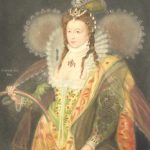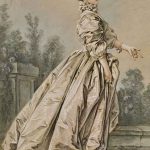Elizabeth I (7 September 1533 – 24 March 1603) was Queen of England and Ireland from 17 November 1558 until her death on 24 March 1603. Sometimes called the Virgin Queen, Gloriana or Good Queen Bess, Elizabeth was the last of the five monarchs of the House of Tudor.
Elizabeth was the daughter of Henry VIII and Anne Boleyn, his second wife, who was executed two-and-a-half years after Elizabeth’s birth. Anne’s marriage to Henry VIII was annulled, and Elizabeth was declared illegitimate. Her half-brother, Edward VI, ruled until his death in 1553, bequeathing the crown to Lady Jane Grey and ignoring the claims of his two half-sisters, Elizabeth and the Roman Catholic Mary, in spite of statute law to the contrary. Edward’s will was set aside and Mary became queen, deposing Lady Jane Grey. During Mary’s reign, Elizabeth was imprisoned for nearly a year on suspicion of supporting Protestant rebels.
The Elizabethan era is the epoch in the Tudor period of the history of England during the reign of Queen Elizabeth I (1558–1603). Historians often depict it as the golden age in English history. The symbol of Britannia (a female personification of Great Britain) was first used in 1572, and often thereafter, to mark the Elizabethan age as a renaissance that inspired national pride through classical ideals, international expansion, and naval triumph over Spain. The historian John Guy (1988) argues that “England was economically healthier, more expansive, and more optimistic under the Tudors” than at any time in a thousand years.
It has often been said that the Renaissance came late to England, in contrast to Italy and the other states of continental Europe; the fine arts in England during the Tudor and Stuart eras were dominated by foreign and imported talent—from Hans Holbein the Younger under Henry VIII to Anthony van Dyck under Charles I. Yet within this general trend, a native school of painting was developing. In Elizabeth’s reign, Nicholas Hilliard, the Queen’s “limner and goldsmith,” is the most widely recognized figure in this native development; but George Gower has begun to attract greater notice and appreciation as knowledge of him and his art and career has improved. Reference: Wikipedia
Below are some examples of prints of Queen Elizabeth I including a woodcut dating to around 1560 and a reversed print on glass.
Various Artists + A Portfolio of Historical Figures: Queen Elizabeth, Napoleon Bonaparte, Henry VIII, Francis Bacon, John Constable, Mezzotints, some with hand coloring, each with a page of text, each signed in pencil, published by the Museum Galleries, London, each with a blind stamp, contained in a green portfolio case (5)
Sold for US$ 179 (£ 136) inc. premium at Bonham’s in 2006
Portrait of Elizabeth I, seated on a throne, holding orb and sceptre. Woodcut 1560 (c.)
Reference: © The Trustees of the British Museum
[CAMDEN, William (1551-1623)]. Annales: The True and Royall History of the famous Empresse Elizabeth, Queene of England France and Ireland &c… Wherein all such memorable things as happened during her blessed raigne… Translated from the French by Abraham Darcie. London: Benjamin Fisher, 1625. 3 parts in one, 4o (220 x 162 mm). Fine engraved title-page and frontispiece portrait of Elizabeth by Robert Vaughan (Johnson 55). (Title and frontispiece trimmed closely and touching images, some light browning and a few small repairs.) 19th-century morocco gilt, gilt edges, by Bedford (spine faded, light rubbing to joints). FIRST EDITION IN ENGLISH of the first three books of Camden’s Annales, his important history of Elizabeth I. According to PMM Camden is “the founder, not merely of antiquarian stidies, but also of the study of modern history.” Later state of the title-page, with Darcie’s name not present. Without the translator’s portrait, present in some copies. STC 4497.
Sold for USD 4,000 at Christie’s in 2010
After Hans Holbein THE MOST ILLUSTRIOUS PRINCESS…QUEEN ELIZABETH OF ENGLAND Hand-colored reverse print on glass. Sight 25 3/4 x 17 1/4 inches
Sold for $225 at Doyle New York in 2006
Queen Elizabeth I 1592 Crispijn de Passe the Elder Netherlandish
Reference: The Metropolitan Museum of Art
Bible in English [The Bishops’ Bible, 1st Edition] THE.HOLIE.BIBLE. CONTEYNYNG THE OLDE TESTAMENT AND THE NEWE. LONDON: RICHARDE JUGGE, [1568] 5 parts in one volume, folio (15 ¼ x 10 in.; 387 x 254 mm). Black letter, text in double columns, 57 lines to the full column, title-page comprised of a word panel (three words xylographic words “The.Holie.Bible” within a woodcut architectural border) above a large engraving by Franz Hogenberg incorporating a medallion portrait of Elizabeth I, the royal arms and allegorical figures, engraved portrait of the Earl of Leicester on divisional title for Part 2, woodcuts after within architectural borders after Virgil Solis on divisional titles for Part 3 and the Apocrypha, New Testament title-page within woodcut allegorical border, 127 other narrative woodcuts after Solis within architectural borders, 7 woodcut maps and numerous diagrams, one full-page woodcut of the Order of Encampment around the Tabernaclet, two other miscellaneous woodcuts, a large engraved initial B with a portrait of William Cecil, Lord Burghley at the beginning of Psalms, almanac and calendar printed in red and black, woodcut initials; general title age-darkened and reinforced on verso, light text browning and staining, side-notes shaved on F4v in Part 1, a few mends to minor marginal tears (one or two slightly affecting text or side-note). Nineteenth-century brown morocco, paneled in blind with a foliate roll tool, inner panel with a smaller acanthus leaf tool, the spine in six compartments with raised bands, similarly tooled in blind and lettered gilt, vellum doublures and guards; joints and bands rubbed, doublures and guards a bit soiled. Brown morocco folding case.
Sold for 60,000 USD at Sotheby’s in 2016





![Bible in English [The Bishops' Bible, 1st Edition] THE.HOLIE.BIBLE. CONTEYNYNG THE OLDE TESTAMENT AND THE NEWE. LONDON: RICHARDE JUGGE, [1568]](https://antiquevintageprints.com/wp-content/uploads/2020/01/elizabeth-i-print-bible-150x150.jpg)


